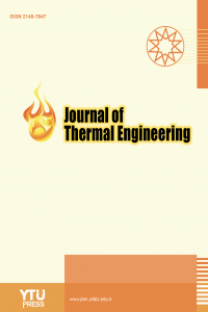Effect of Process Conditions on Temperature Distribution in the Powder Bed during Laser Sintering of Polyamide-12
Anahtar Kelimeler:
-
Effect of Process Conditions on Temperature Distribution in the Powder Bed during Laser Sintering of Polyamide-12
A sintered part‟s mechanical properties are often variable dependent on the temperature at which it was sintered. Prior research has investigated how predefined process conditions (such as scan speed and laser power) in the „Sinter‟ software affect built parts (Majewski & Hopkinson, 2011), however, little work focuses on other process temperature distribution in the bed relative to these parts. These conditions are not always controllable in the „Sinter‟ software. By replacing the scanner at the top of the Sinterstation 2000 with a thermal imaging camera, an insight into the temperature distribution on the part bed was obtained. A temperature variance of up to 7°C was found across the bed, as well as a large temperature drop and recovery period on powder layer recoat. This paper explores the possible causes of this variation in the processing of DuraForm™ Polyamide-12 powder by monitoring and assessing build operations, enabled by replacing the front viewing window with a retro-fitted thermal imaging camera. The part bed was observed and various process conditions analyzed including powder recoat, part and feed heaters, and swing gate configuration. On powder recoat, the part bed exhibited a drop in temperature because the fresh layer of powder is at a lower temperature than the powder already present in the part bed. The part bed temperature drop lessens with raised feed bed temperatures however there are
Keywords:
Polyamide-12, SLS, Powder, Sinterstation, thermal distribution,
___
- 3D Systems, 2002. SLS Reference Guide. [Online] Available at: www.3dsystems.com/ [Accessed 12 Dec 2014].
- Gebhardt, A., 2007. Rapid Prototyping – Rapid Tooling – Rapid Manufacturing. 3 ed. Munich: Hanser Publishing.
- Hardo, P., Wang, J. P. & Stucker, B., 1998. A Design Approach to Determine the Optimal Process Parameters for Rapid Prototyping Machines. Taipei, Proceedings of the Joint Conference of the Fifth International Conference on Automation Technology and the 1998 International Conference of Production Research.
- Majewski, C. E. & Hopkinson, N., 2011. Effect of Section Thickness and Build Orientation on Tensile Properties and Material Characteristics of Laser Sintered Nylon-12 Parts. Additive Manufacturing Research, 17(3), pp. 176 - 180.
- Tontowi, A. & Childs, T. C., 2001. Density Prediction of Crystalline Polymer Sintered Parts at Various Powder Bed Temperatures. Rapid Prototyping Journal, 7(3), pp. 180 - 184.
- Wegner, A. & Witt, G., 2011. Process Monitoring in Laser Sintering Using Thermal Imaging. The Twenty- Second Annual International Solid Freeform Fabrication (SFF) Symposium, Austin, TX, USA.
- Yuan, M. & Bourell, D., 2013. Nitrogen Flow Effects on Part Bed Surface Temperature during Laser Sintering. The Twenty-Fourth Annual International Solid Freeform Fabrication (SFF) Symposium, Austin, TX, USA,
- Yayın Aralığı: 6
- Başlangıç: 2015
- Yayıncı: YILDIZ TEKNİK ÜNİVERSİTESİ
